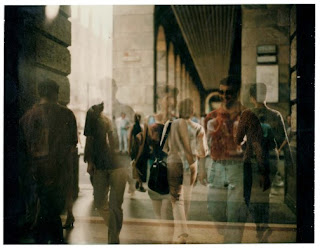Personally I am usually more moved by images depicting the plight of the innocent wildlife, and as much as I'd like to think that I already tread as lightly as I can on the planet, seeing such images always pushes my thoughts towards having an even lesser impact.
That brings to light that, with any environmental campaign which results in or includes a series of images, there are two avenues of impact and influence and potential change. They being political and personal, in as much as changes can be initiated on a larger scale national/international policy basis and/or a resultant shift brought about by the change in behaviors and attitudes by individuals.
http://www.google.com.au/imgres?imgurl=http://fredvidal.files.wordpress.com/2010/05/oilsoakedbird-1.jpeg
http://oceans.greenpeace.org/raw/image_full/en/photo-audio-video/photos/holiday-beach-jbeil.jpg
I like how this shot includes in the background the "idyllic" beach-side resort resplendent with straw umbrellas and the resort hotel over looking the coast, and have that contrasted with the damage caused by the oil spill.
Either way, the quality, dissemination and ultimately the impact of these images is vital in the delivery of a message and awareness of a situation or cause. If the public is saturated by masses of low quality, un-emotive imagery then there is a propensity to not only being desensitised but also the real possibility of feeling overwhelmed and hopeless. Resigned to "thats the way things are" with a sense of futility regarding any contribution of time or money to a cause.
Similarly, images that attempt capture the beauty of an endangered subject (wilderness or wildlife), really need to be well conceived and constructed encouraging the viewer to imagine the loss of that subject matter. This is not just a matter of recording what is there, but doing so to sell the idea of preserving it with the hidden spectre/subtext of doom if action is not taken.
Truthfulness is also a key component for environmental /political photography. Images can not be too heavily altered or modified (if at all) because, as with political parties, environmental organisations could too be accused of propaganda and manipulation and can be detrimental to their profile and to their cause.
That said, all the above relates primarily to the preservation of that which is those parts of nature and the planet that are deemed to be attractive or otherwise of pleasing aesthetic. So what of those unheralded, forgettable but just as important regions/species. Can they/should they be the subject of a visual campaign? and if so how would such a campaign work in its favour, let alone not against it.
http://i.ytimg.com/vi/sLpl_6CbHoA/0.jpg
For example:
It difficult to imagine an environmental group gathering much support to protect an area as above, if it was to become subject to some un-eco-friendly development or the like..
Even if it had the rarest of insects or vegetation owing to both its ugly barren landscape and this poorly captured image its fate may be well sealed.









